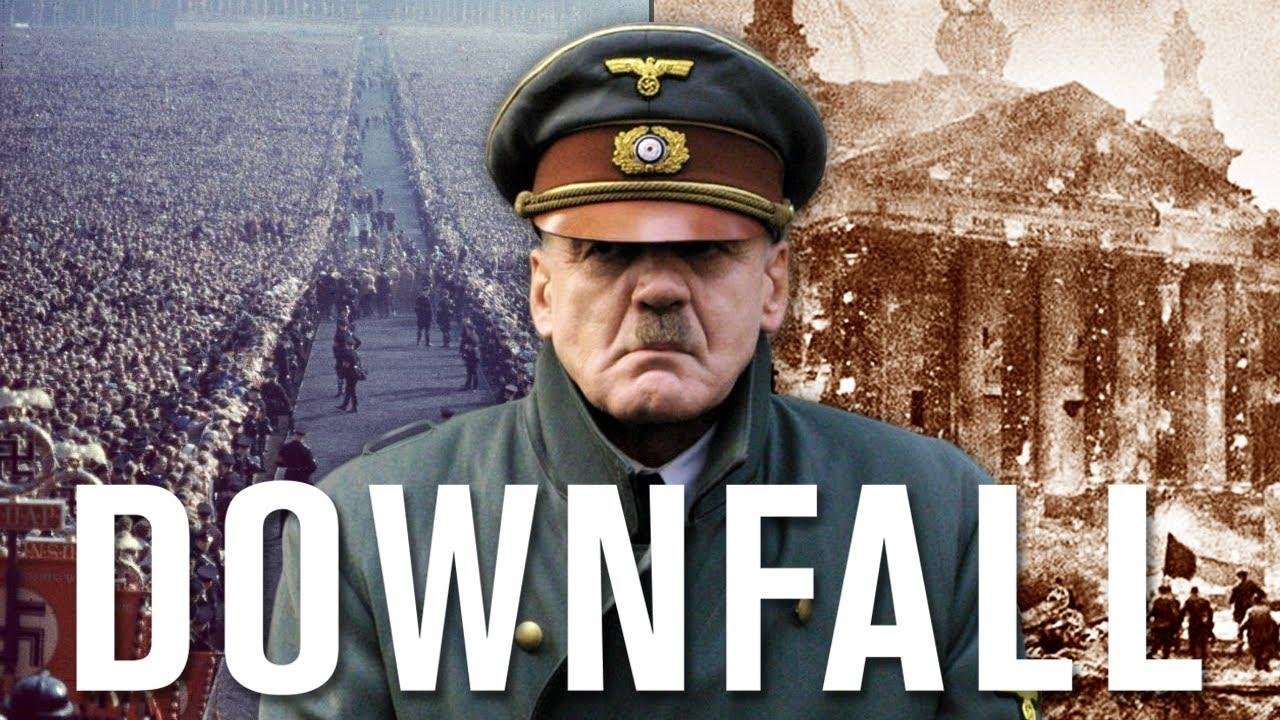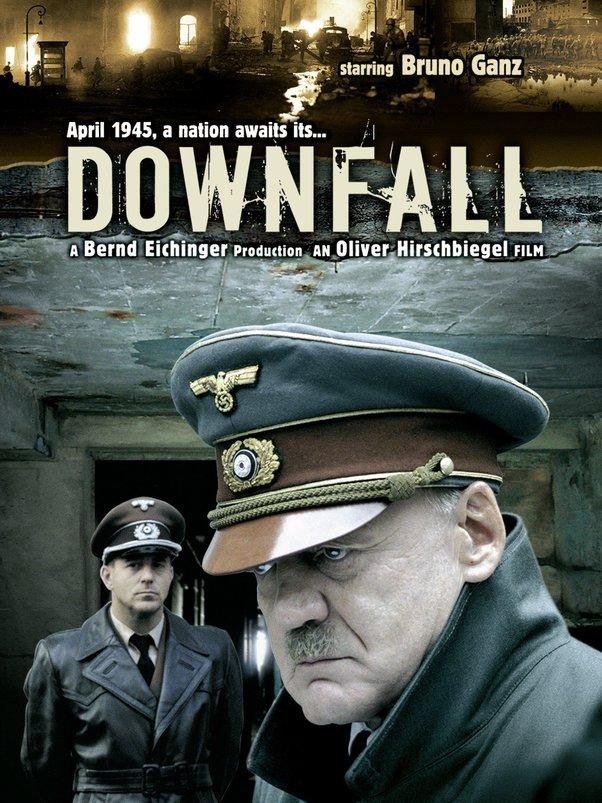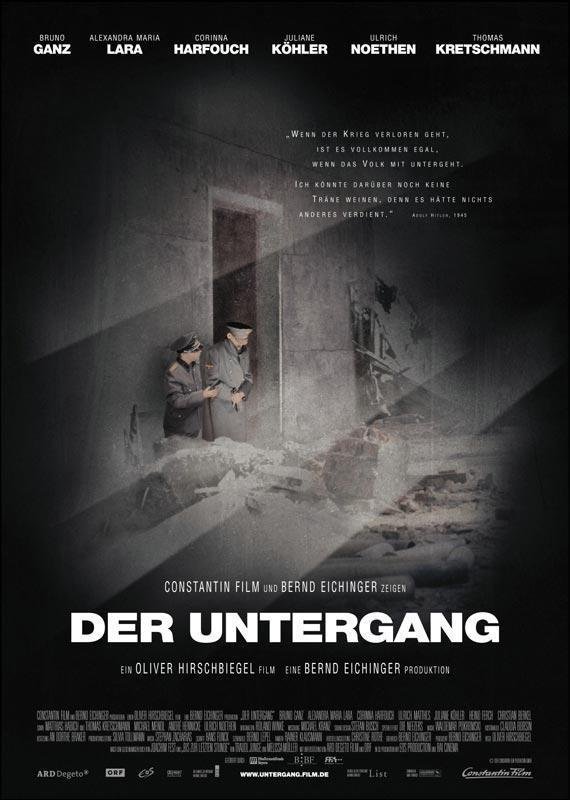Analyzing the Impactful Depiction of History in ‘Downfall’: A Must-See Film for History Buffs
As cinema enthusiasts, we often come across movies that leave a lasting impact on our minds. One such film is ‘Downfall’, a 2004 German-language movie that depicts the final days of Adolf Hitler and the Nazi regime. While the movie is a gripping drama in its own right, what sets it apart is its incredibly impactful depiction of historical events. ‘Downfall’ is a must-see film for history buffs, and in this article, we will analyze its historical depiction and the impact it has on its viewers.
As cinema enthusiasts, we often come across movies that leave a lasting impact on our minds. One such film is ‘Downfall’, a 2004 German-language movie that depicts the final days of Adolf Hitler and the Nazi regime. While the movie is a gripping drama in its own right, what sets it apart is its incredibly impactful depiction of historical events. ‘Downfall’ is a must-see film for history buffs, and in this article, we will analyze its historical depiction and the impact it has on its viewers.

Introduction to the film Downfall
If you’re a fan of historical dramas, you definitely don’t want to miss the 2004 German film, “Downfall”. Directed by Oliver Hirschbiegel, this cinematic masterpiece portrays the final days of Adolf Hitler and the collapse of Nazi Germany during World War II. With powerful performances from Bruno Ganz as Hitler and Alexandra Maria Lara as his secretary, Traudl Junge, “Downfall” provides a unique perspective on one of the most momentous and tragic events in modern history. Through a combination of intense drama, stunning visuals, and meticulous attention to historical accuracy, this film is a must-see for any serious movie buff.
Historical background of the events depicted in the film
The film “Downfall” directed by Oliver Hirschbiegel depicts the final days of Adolf Hitler and the Nazi party during the Battle of Berlin in 19 The film is based on several historical accounts and memoirs of those who were present during that time. The events depicted in the film are historically accurate, including Hitler‘s declining health and mental state, as well as the devastating aftermath of the battle. The film provides a glimpse into the historical period that shaped Germany‘s future and the world’s perception of the Nazi regime. The historical background of the events depicted in the film provides valuable insight into the impact of Hitler’s leadership and the atrocities committed during the war.
Analysis of the film’s portrayal of key historical figures such as Hitler and Eva Braun
The portrayal of historical figures in films often sparks debates about its accuracy and the impact it has on our understanding of history. In the 2004 film “Downfall,” the depiction of key figures such as Hitler and Eva Braun has been heavily scrutinized. The film’s portrayal of Hitler as a frail and mentally unstable man in his final days has been praised for its realism and humanization of a man often seen as a monster. However, some critics argue that the portrayal of Eva Braun as a victim and bystander in the atrocities committed by the Nazi regime is problematic and downplays her complicity. Ultimately, the analysis of the film’s portrayal of historical figures in “Downfall” raises important questions about the responsibility of filmmakers to accurately depict history while still creating compelling and engaging stories for audiences.

Examination of the film’s use of setting and costume design to create a historically accurate atmosphere
In the critically acclaimed film, “Downfall,” the use of setting and costume design plays a crucial role in transporting the audience back to the historical events depicted in the movie. The intricate attention to detail in recreating the surroundings and clothing of the characters helps to create a visually accurate representation of the time period, supporting the authenticity of the movie’s narrative. From the grandeur of the Führerbunker to the uniforms of the Nazi soldiers, every aspect of the film’s setting and costume design was carefully crafted to accurately reflect the reality of the World War II era. The result is a film that not only tells a powerful story, but also immerses the viewer in a historically accurate atmosphere.
Discussion of the film’s themes and messages
One of the most interesting aspects of analyzing the film “Downfall” is the examination of its themes and messages. The movie’s intense portrayal of the final days of Adolf Hitler and the Third Reich presents a powerful statement about the dangers of extremism and the need for strong leadership. However, the film also touches on topics such as loyalty, betrayal, and the psychological effects of war. Through the use of powerful performances and haunting imagery, “Downfall” prompts viewers to reflect on the complexities of history and the lasting impact of past events.
Comparison of Downfall to other films that depict the same historical events
When it comes to films that depict historical events, Downfall stands out as one of the most gripping and emotionally charged examples. While there have been numerous other films that tackle the subject of the fall of the Third Reich and the end of World War II, few have captured the raw intensity and human drama of the events quite like Downfall. From its powerful performances to its stunning cinematography, this film is a true tour de force that sets the bar high for historical dramas. When compared to other films that cover the same period of history, Downfall offers a unique perspective that is both insightful and thought-provoking.

Impact of the film on popular culture and public perception of the events depicted
The film “Downfall” has had a significant impact on popular culture and public perception of the events depicted. The film, which portrays the final days of Adolf Hitler and Nazi Germany, has become a reference point for filmmakers and historians alike. The film’s portrayal of Hitler has become iconic, with actor Bruno Ganz‘s performance being widely praised. The film has also been the subject of controversy, with some critics arguing that it humanizes Hitler and the Nazi regime. Nonetheless, “Downfall” has played a key role in shaping our understanding of one of the most significant events in modern history.
Reception of the film by critics and audiences
The reception of the film “Downfall” by both critics and audiences was mostly positive. The film was praised for its accurate and vivid depiction of the final days of Hitler’s Nazi regime, as well as for the stellar performances of the cast, particularly Bruno Ganz’s portrayal of Hitler. However, some critics have argued that the film humanizes Hitler too much and fails to adequately address the atrocities committed by the Nazis. Despite this criticism, “Downfall” remains a notable work in film history for its nuanced portrayal of a complex and controversial subject matter.
Controversies surrounding the film’s depiction of certain events or characters
Downfall is a historical film which depicts the final days of Adolf Hitler and the Nazis during World War II. However, the film has been surrounded by controversies surrounding its depiction of certain events or characters. Some have criticized the film for humanizing Hitler and portraying him as a sympathetic figure, while others have praised the film’s accuracy and attention to historical detail. Regardless of the controversies, Downfall remains a powerful and thought-provoking film that raises important questions about the nature of evil and morality.
Conclusion and final thoughts on the significance of Downfall in the history of film and historical representation
In conclusion, Downfall remains a significant film in the history of cinema and historical representation. Its depiction of Adolf Hitler’s final days and the downfall of the Nazi regime presented a different perspective on the Second World War compared to the usual Hollywood portrayal. The film’s attention to historical accuracy and use of primary sources also made it a valuable tool for historians and scholars studying the time period. Additionally, the film showcased the importance of portraying historical figures and events with sensitivity and nuance, rather than simply as caricatures. Overall, Downfall is a powerful reminder of the complexity of history and the importance of responsible representation in film.
For more information about Downfall film history depiction analysis, including movie details, cast information, etc..
check out the filmaffinity page.



